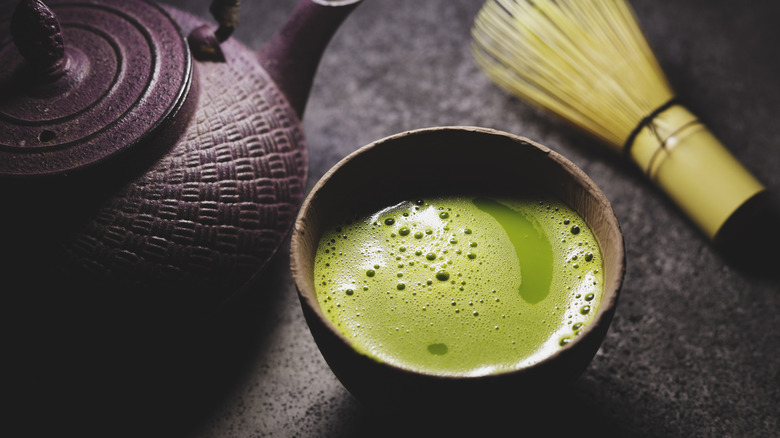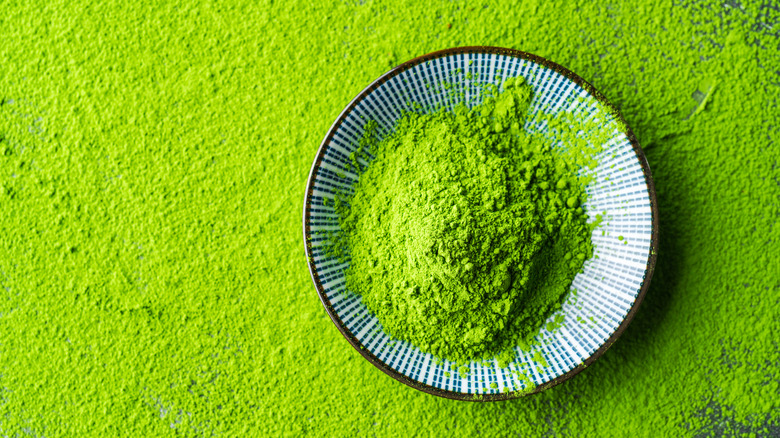This Exact Water Temperature To Use For Perfect Homemade Matcha Every Time
A lot of things make matcha unique to regular green tea, one of them being that rather than steeping the tea leaves in water and removing them, you mix the matcha into the water and drink it. It's why, unlike any other tea, you consume the entire tea leaf — and therefore take in even more of the antioxidants. But, it's also why it must be treated with care — beginning with how you store it and ending with how you prepare it.
Matcha can't be treated like a tea bag and thrown into boiling hot water. If it is, it'll be destroyed, which could explain why your matcha keeps tasting like bitter, burnt grass. As coffee and tea sommelier, and founder of Oh, How Civilized, Jee Choe, explained to Tasting Table, "Boiling hot water should never be used to brew green tea since it can scald the tea leaves, resulting in a bitter taste." Instead, she says to use something a bit more gentle.
"Water that has just started simmering should be used instead. If you have an electric kettle with a temperature setting, set the water temperature to 175 [degrees Fahrenheit]," said Choe.
Caring for your matcha
Matcha is an acquired taste, but there are clear and discernible differences between a quality cup of ceremonial-grade matcha and a cup of cheap, culinary-grade matcha. There are also red flags to look out for when you're buying matcha that go beyond ceremonial vs culinary grade. You don't want to cheap out, for one, and it's best to stick to matcha powders priced around $15 per ounce or more. To be sure you're getting what you pay for, double-check that your powder is made in Japan, the country with the longest history of cultivation and the strictest agricultural laws. Then, when you bring your matcha home, the rest is up to you.
Once you've secured a quality matcha powder, it's your job to look after it. Storing matcha isn't as simple as throwing it in the fridge, and there are a few extra steps you'll need to take. It's a good idea to double seal your matcha, storing the container that it comes in inside of a larger airtight bag or container so that it doesn't absorb any of the smells or flavors of the other foods in your fridge. When you do get it out, ensure you keep any air, heat, or light exposure to a minimum — and prepare it right. As Jee Choe says, always opt for simmering water over boiling. Also, keep the kind of whisk you use in mind.

